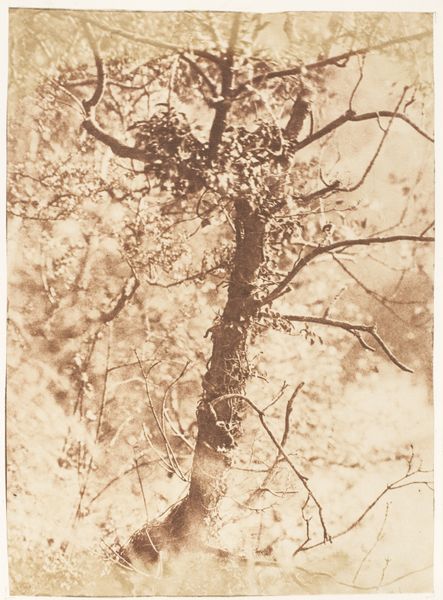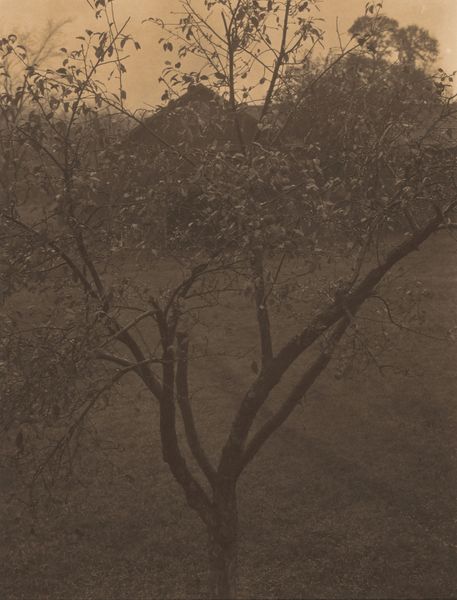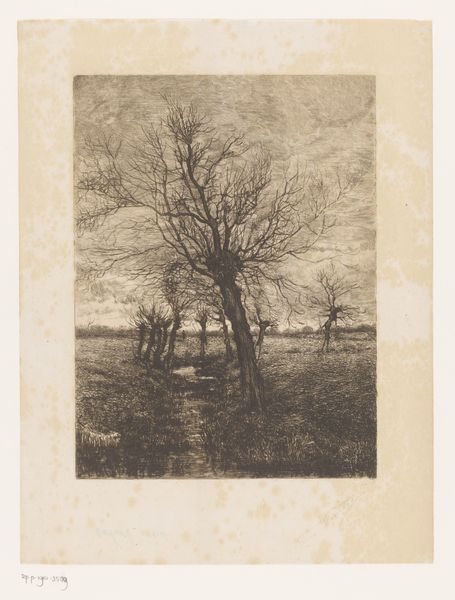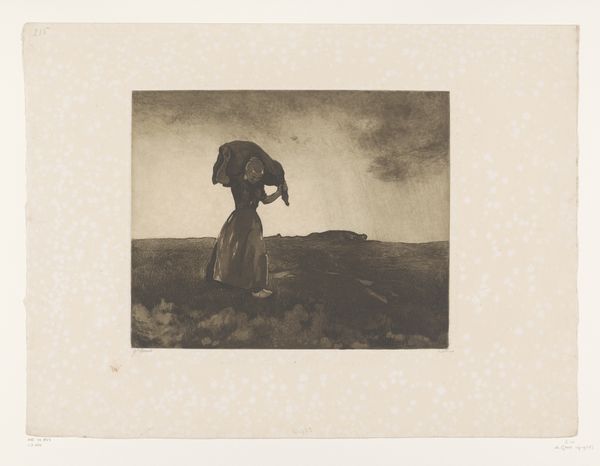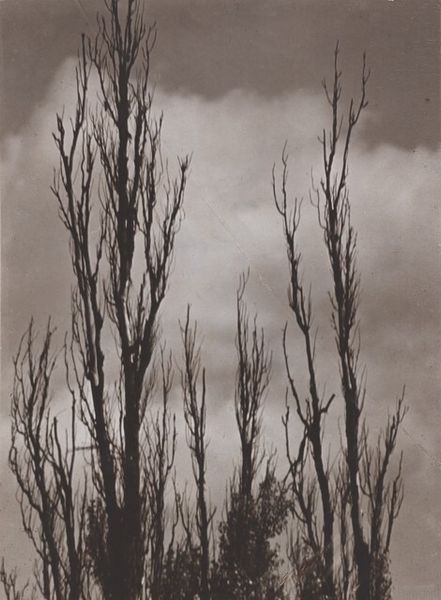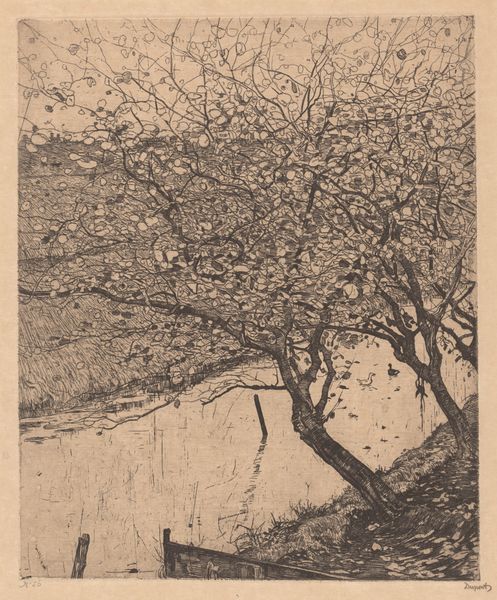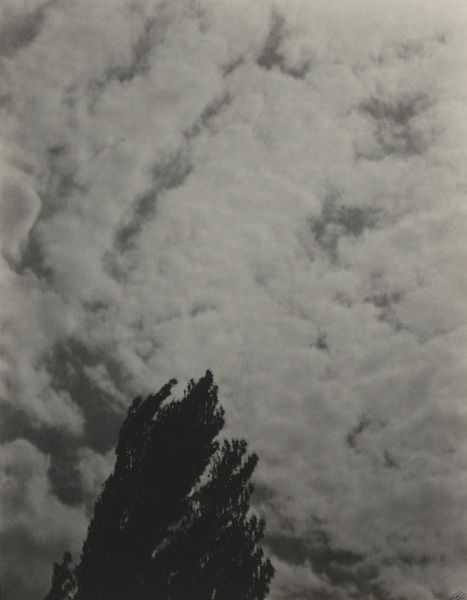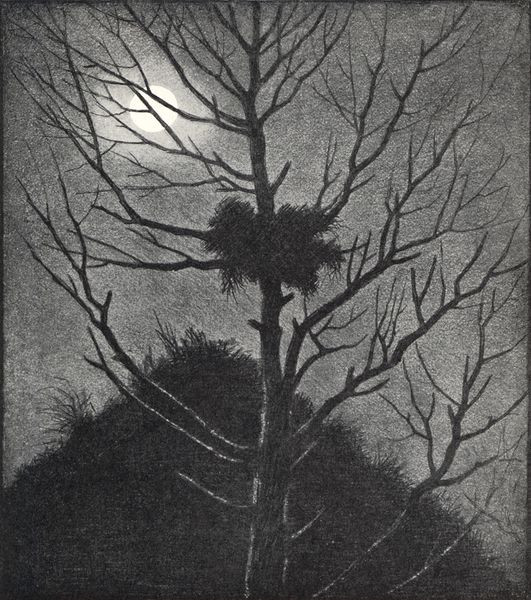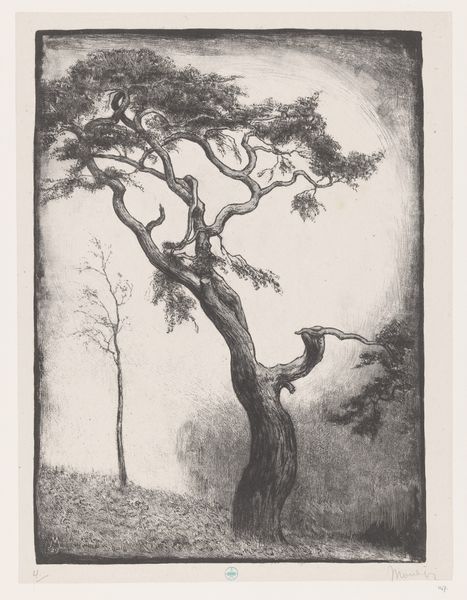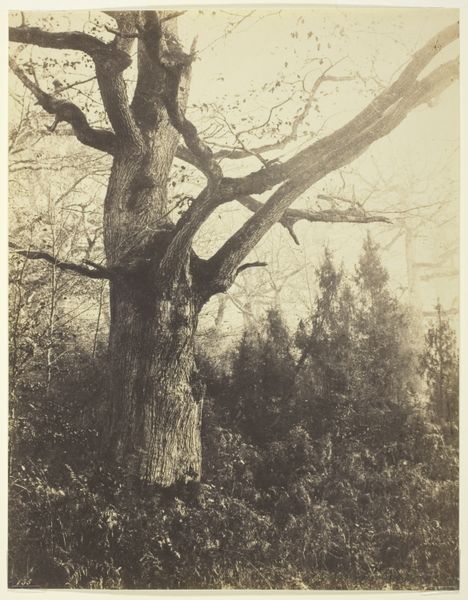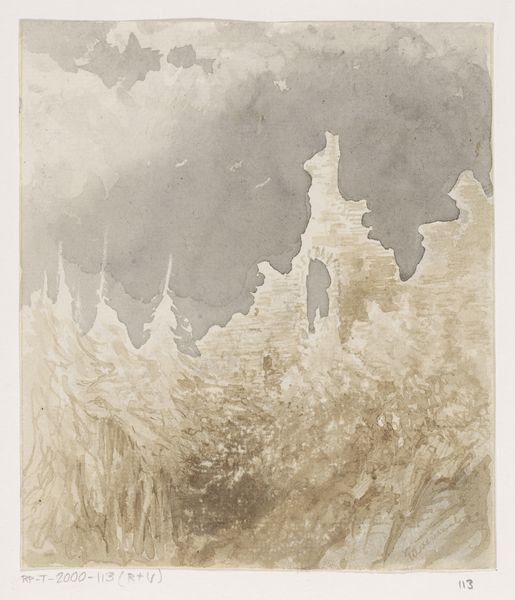
Dimensions: 26 x 19.8 cm (10 1/4 x 7 13/16 in.)
Copyright: Public Domain
Curator: Eugène Cuvelier's "Près de la Caverne, Terrain Brûlé," dating from between 1860 and 1865. It’s a gelatin silver print, currently residing at the Metropolitan Museum of Art. What's your take? Editor: Bleak, hauntingly beautiful, really. It feels like a scene from a forgotten fairy tale. I'm drawn to the bare trees against that bruised sky. They feel almost skeletal, but stubbornly resilient. Curator: The pictorialist and romantic elements definitely evoke that mood. Consider the processes Cuvelier employed. This wasn’t simply a snapshot; it’s an artistic construction using the chemistry and mechanics available at the time. He carefully manipulates tone and texture, even with the relatively young gelatin silver printing technique. Editor: Right, it is very tactile, almost sculptural. The figures, perched on the rocks, are tiny but seem completely connected to this place; their very posture suggesting their rootedness with the scorched landscape. What was the landscape being subjected to during the mid-19th century in Europe? Curator: Land management practices during the mid-19th century were largely guided by burgeoning agricultural interests, so we might also imagine what industrial developments did to this area in its local context. Knowing this helps challenge our idea of untouched wilderness: consumption patterns, raw material extraction. These would likely lead back to colonial and even early imperial activities across Europe. Editor: The landscape doesn't appear as majestic, or wild. Yet in other ways, I want to reach into the landscape. The photograph seems more than it is: more alive, more enduring than its individual components. Curator: And that enduring quality leads into photography's social function too; memorializing landscape changes that can only be accessed by such photographs. Editor: It's strange to think of this as something that has come and gone now, with time; it becomes a piece that now has to face the passing of time in order to truly represent something new for us now, as it gains layers of interpretation. Curator: Precisely! The piece, even in stillness, changes. That interplay of representation, environmental realities and the craft is incredibly resonant, and complex.
Comments
No comments
Be the first to comment and join the conversation on the ultimate creative platform.
